I recently had the good fortune to play the Line of Battle series Last Chance for Victory campaign.
We kicked off on the afternoon of the 1st day of the battle. Around 2 or 3pm, thereby skipping all the scripted stuff.
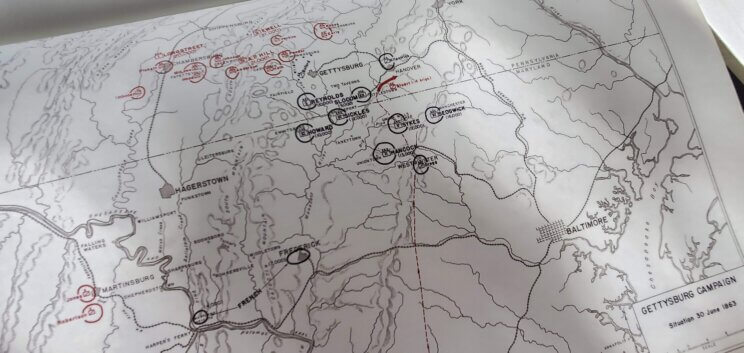
The Rebs have a challenging victory condition. Capture a hex near Culp Hill & Cemetery Ridge and have an unlimbered arty unit in it or withing 4 hexes of it, the Union has to prevent that AND not allow any good order units on to certain road hexes behind Cemetery ridge.
Suffice to say things worked out mostly historically. I’d say both sides played fairly historically.
Though I was keen based on VC’s to go all in on the Southern end of the Gettysburg , with all of Early’s forces plus diverting Longstreet to that cause too.
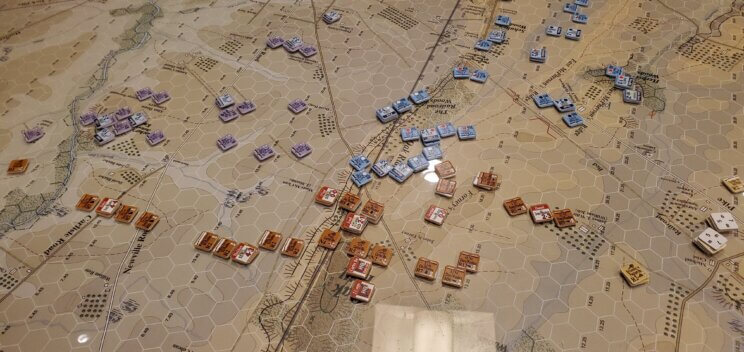
I think this is interesting. Because a lot of wargamers, tend to ‘play out the history’ versus seeking out perhaps alternate strategies or tactics that the rules provide for. Now not ALL wargamers do this, a lot of folks also love to seek out alternate strategies. I am somewhere in the middle.
Some will even say – ‘its a great game because it played out exactly true to history’….well it might if you do ‘exactly’ the same things the participants did. Am I right? 10/10 for history thumbs up baby!
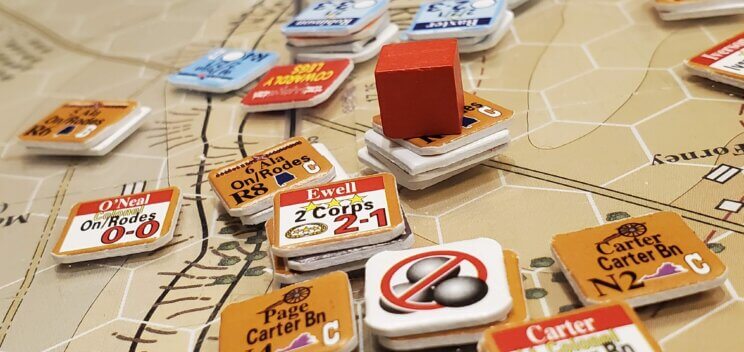
Others will decry not be able to ‘execute the perfect battleplan’ . For me that is what is fab about wargames, and the community, we care about the history, the conflicts therein and the leadership, lessons and evolutions of a wide variety of systems and designer intent to allow us to do it all if we really want to.
So it was interesting to see, some alternate strategies applied here and there. Retreating a regiment [I think that was the formation size ], in a kind of reverse bounding overwatch was novel to me. Leaving 1 Brigade [2 or 3 units] at a time to soak up losses, slow the enemy and inflict its own losses on attackers. Highly effective.
Without an in depth appreciation of ACW warfare I could not speak to the veracity of likelihood of that particular tactic. Effective for sure. By the time that Early’s Corp got to the base of the ridges & hills they were pretty beat up due to this. More than historical I don’t know could not say.
On the Southern portion of the map the rest of the Rebs started working the Union, clearing Seminary ridge reasonably quickly and in pretty good order.
Day 2 of the battle saw fluke stoppages and slow order acceptance cause a disjointed attack. Which parlayed nicely to historical effect. Early really needed Johnson in the fight on time and supporting the two other battered divisions. If they had made it, could Culps’ Hill and the required area around Cemetery Ridge have been captured? With two fresh Corps of Union men about to attack or come on board I strongly doubt it.
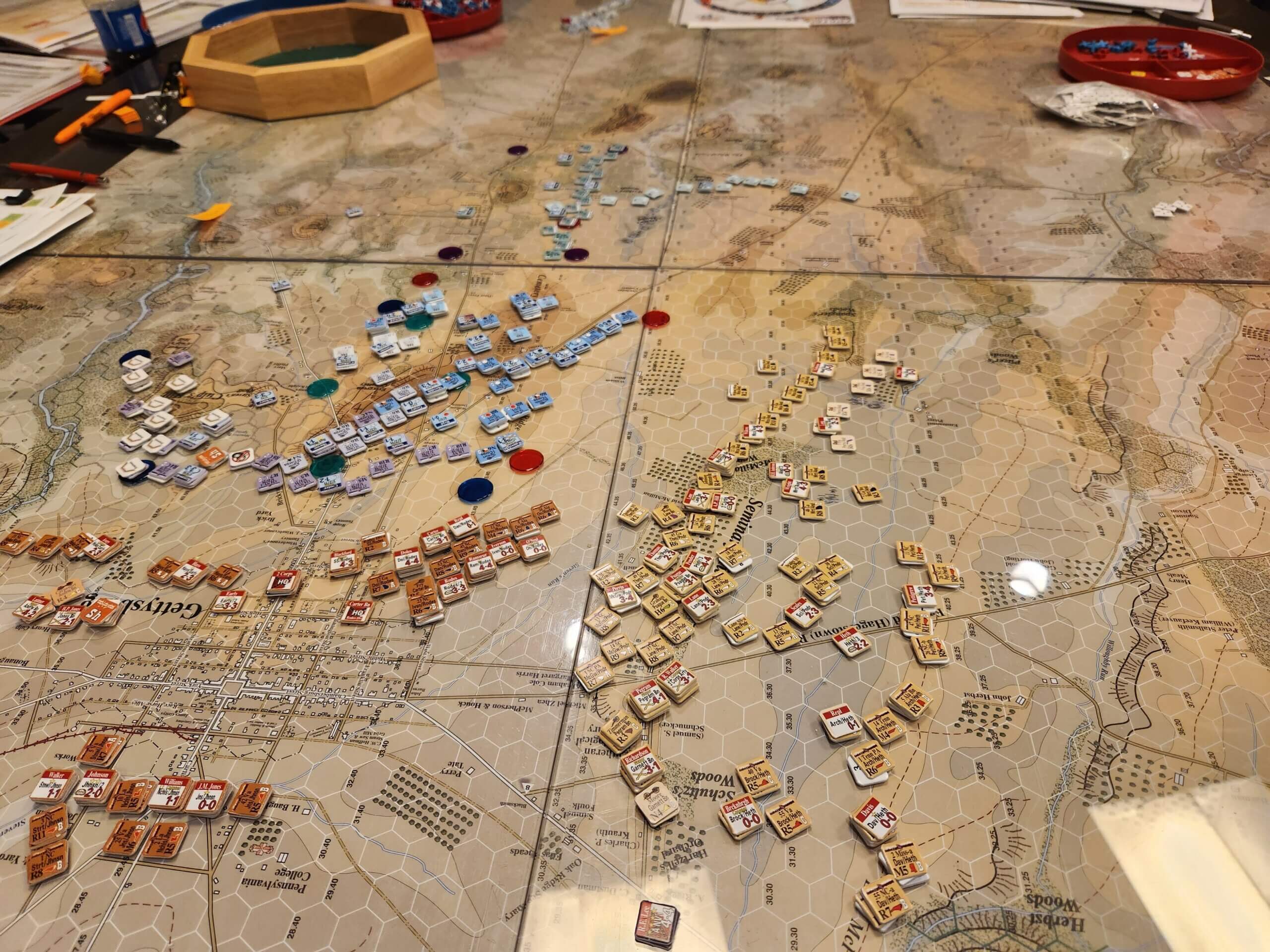 MMP, LOB
MMP, LOB
The Union streamed in forces and had kill boxes of arty and some infantry on reverse slope to counter attack with, as Rebs took parts of the heights. Our two Reb General agreed arty was for counter battery fire on the attack and canister kills on the attackers.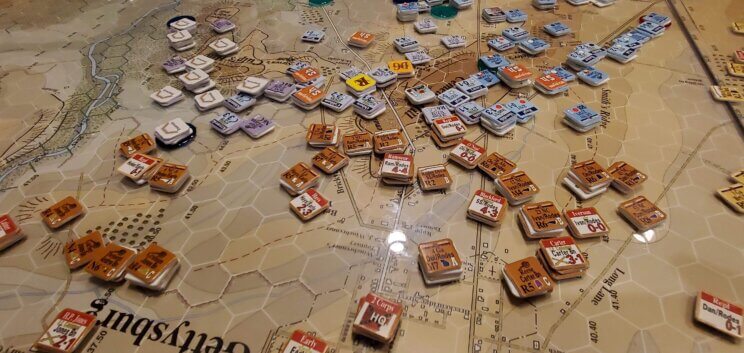 s
s
As things evolved the meatgrinder developed in the early morning hours, as Union Arty pummeled the Confederate forces effectively.
Its worth noting just how streamlined and efficient the combat rules are. Almost perfect I’d say. Without all that heavy heavy process and weight across 100’s of units. It captures all the nuance of Arty and gun/rifle types while providing a solid mechanism for melee and the inevitable post combat morale checks which is by the way where most of your setbacks – i.e. further step losses, and morale condition degradation will occur.
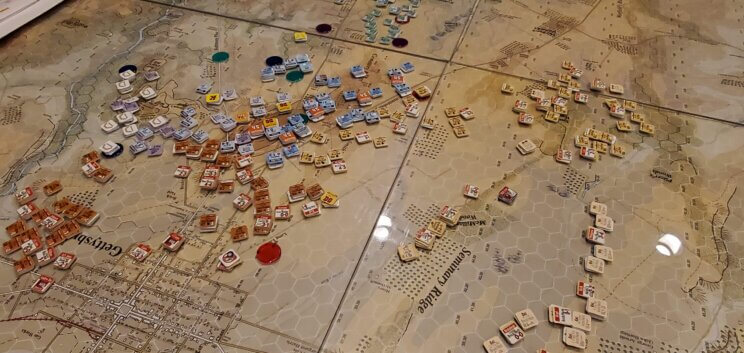
Unfortunately I had to leave Saturday morning, so the fellas played on for a bit longer but this is where we roughly ended up, which I would categorise as a resounding Union win.
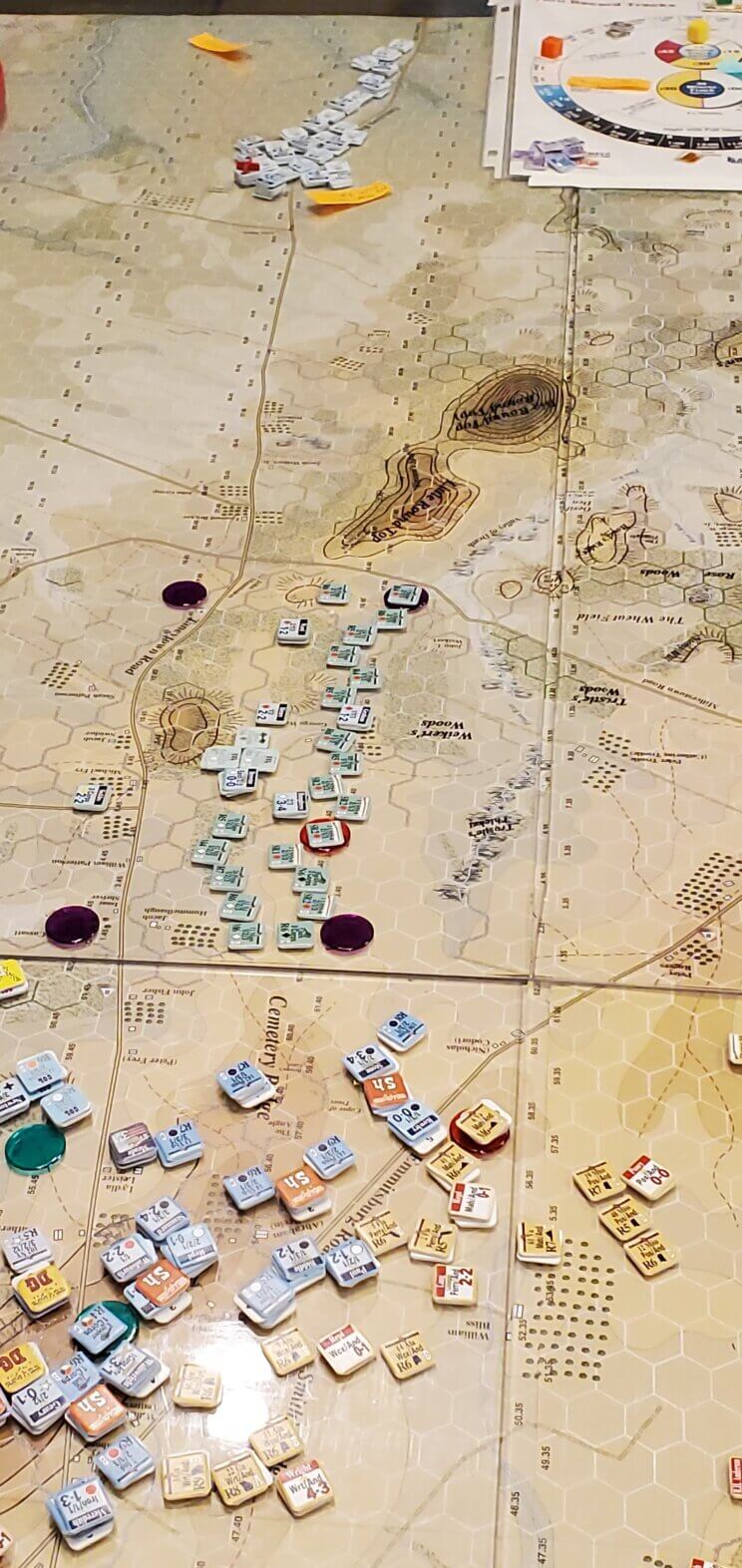
I’d say this is without a doubt one of my top two systems for Tactical scale ACW combat. It takes the huge heavy lifting of GBACW, and chit draws, and awkward movement mechanics and voluminous special rules and literally streamlines it so you can play a real four map monster game with competent people probably in 3 days if you stayed focused and played at a clip. At the same time it provides more detail and scope and flavor than several other ACW systems that are floating around.
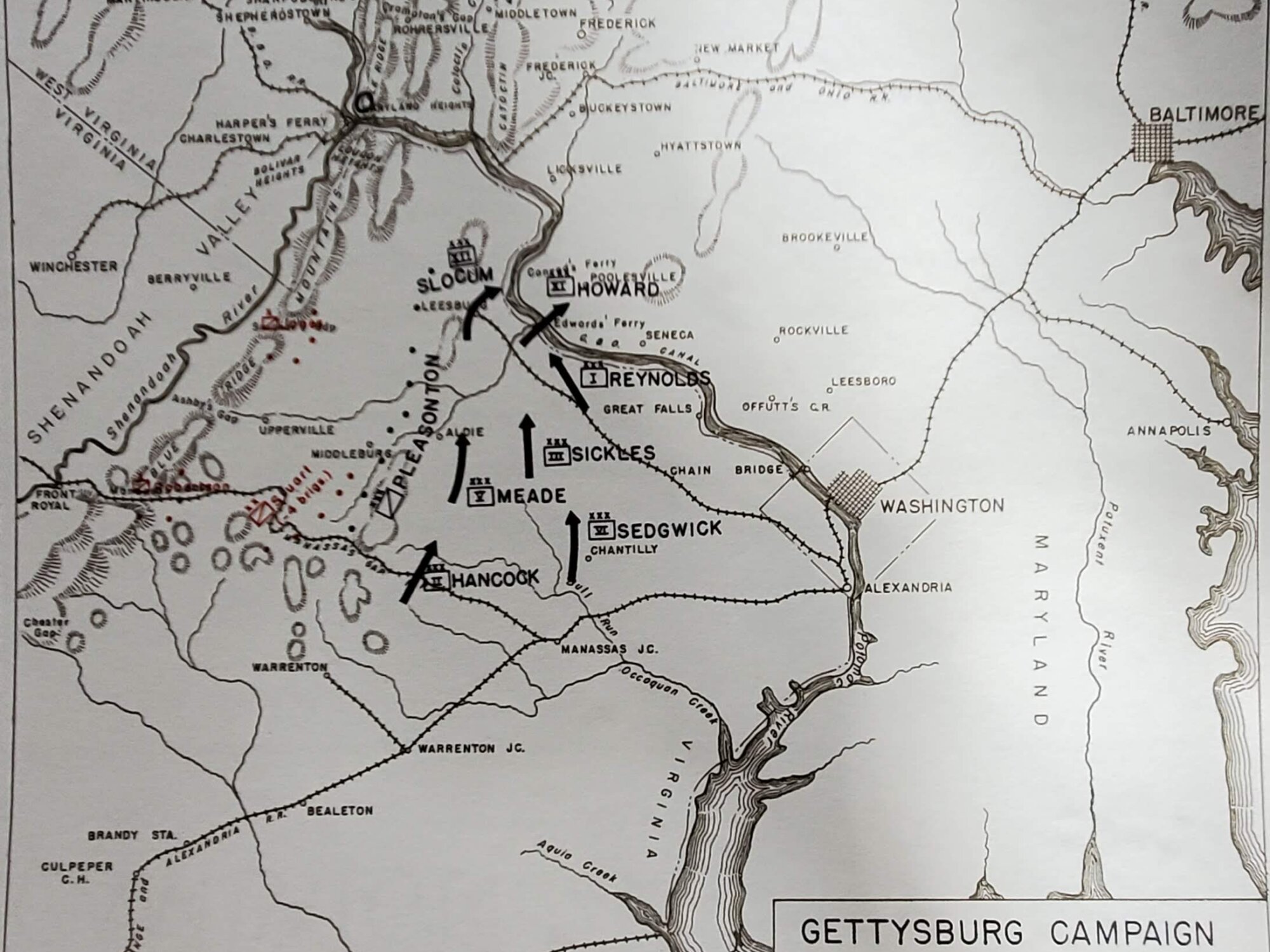
Kev, my attitude is that if the game can closely approximate history if you play it like the actual protagonists, then you can feel more comfortable with your results if you go off script. That doesn’t completely take into account the fog of war the original protagonists had in this giant meeting engagement, but I can live with that. Actually, the Union had the information advantage because Stuart was gallivanting about and didn’t report to Lee until day 2, and the Union Bureau of Military Information under Col George Sharp had already accurately identified the entire Confederate order of battle. https://www.army.mil/article/119748/col_george_h_sharpe_appointed_army_of_the_potomacs_intelligence_chief_feb_11_1863
EXCELLENT link! Thank you.